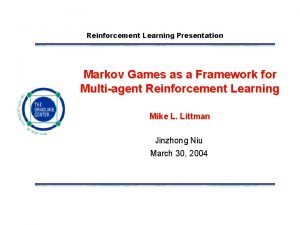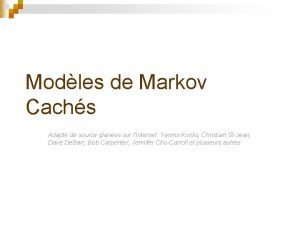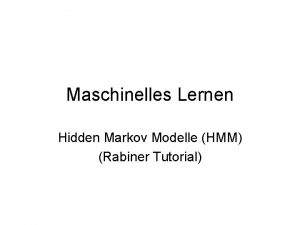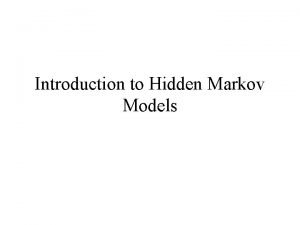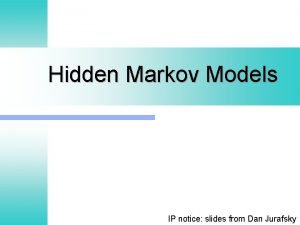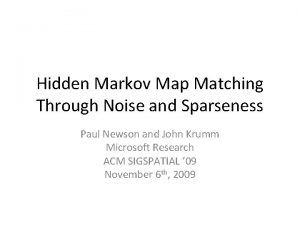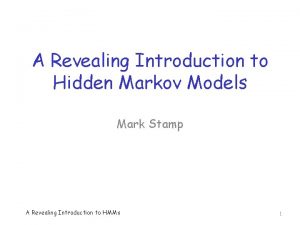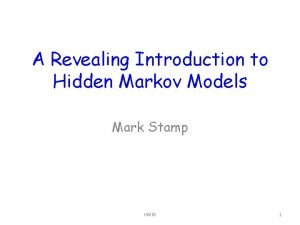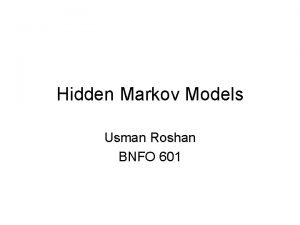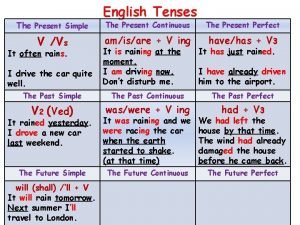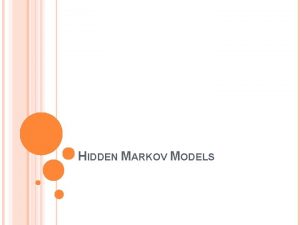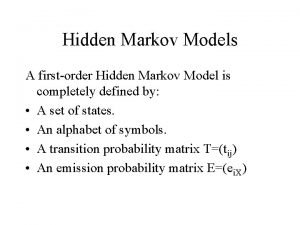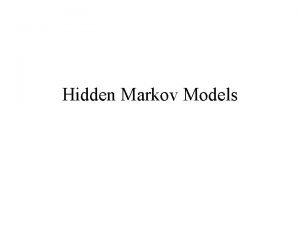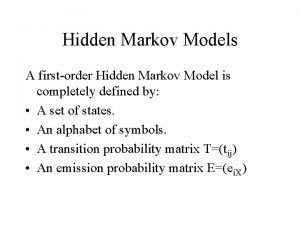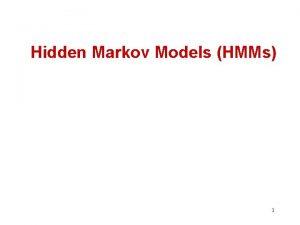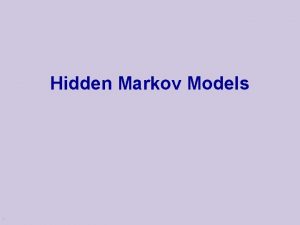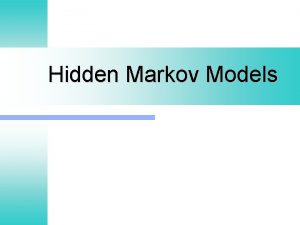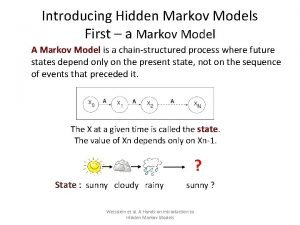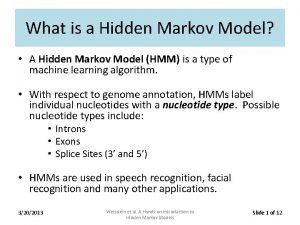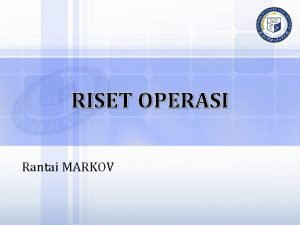Hidden Markov Model Simple weather prediction raining today















- Slides: 15

Hidden Markov Model

Simple weather prediction • raining today rain tomorrow p rr = 0. 4 • raining today no rain tomorrow prn = 0. 6 • no raining today rain tomorrow pnr = 0. 2 • no raining today no rain tomorrow prr = 0. 8 Note that rows sum to 1. It is called a stochastic matrix or transition matrix.

Coke vs. Pepsi Given that a person’s last cola purchase was Coke ™, there is a 90% chance that her next cola purchase will also be Coke ™. If that person’s last cola purchase was Pepsi™, there is an 80% chance that her next cola purchase will also be Pepsi™. 0. 1 0. 9 coke 0. 8 pepsi 0. 2

Coke vs. Pepsi Given that a person is currently a Coke purchaser, what is the probability that he will purchase Coke two purchases from now? Coke Pepsi P(Coke to Pepsi, then back to Coke) = p(Coke to Pepsi)*p(Pepsi to Coke) =. 1*. 2 =. 02

Coke vs. Pepsi Given that a person is currently a Coke drinker, what is the probability that she will purchase Pepsi three purchases from now?

Coke vs. Pepsi Assume each person makes one cola purchase per week. Suppose 60% of all people now drink Coke, and 40% drink Pepsi. What fraction of people will be drinking Coke three weeks from now? Coke=0, Pepsi=1 P 00 q 0 =0. 6 q 1=0. 4 We want to find

Equilibrium (Stationary) Distribution • Suppose 60% of all people now drink Coke, and 40% drink Pepsi. What fraction will be drinking Coke 100000 weeks from now? • For each week, probability is well defined. But does it converge to some equilibrium distribution? 0. 1 0. 9 coke 0. 8 pepsi 0. 2

Equilibrium (Stationary) Distribution Stationary distribution are determined by 1. Irreducible: every state is accessible from every other state. 2. Aperiodic: there exists at least one state for which the transition from that state to itself is possible. 3. Positive recurrent: the expected return time back to the state is finite for every state. 0. 1 0. 9 coke 0. 8 pepsi 0. 2

Equilibrium (Stationary) Distribution • Writing P for the transition matrix, a stationary distribution is a vector π which satisfies the equation Pπ = π. • In this case, the stationary distribution π is an eigenvector of the transition matrix, associated with the eigenvalue 1.

Markov Property • Markov Property: The state of the system at time t+1 depends only on the state of the system at time t Xt=1 Xt=2 Xt=3 Xt=4 Xt=5

Stationary Assumption Probabilities are independent of t. So, This means that if system is in state i, the probability that the system will next move to state j is pij , no matter what the value of t is

Where is the robot? • Are there obstacles lay immediately to the north, south, east, and west? • E 1= NSW. At time 1, robot detect obstacle in N, S, and W.

• The size of each disk corresponds to the probability that the robot is at that location. • The sensor error rate 0. 2.

Performance of HMM localization

Summary • A hidden Markov model (HMM) is a statistical Markov model. • In a hidden Markov model, the state is not directly visible, but the output, dependent on the state, is visible. • An HMM can be presented as the simplest dynamic Bayesian network.
 Rhymes with grow
Rhymes with grow Hidden markov model rock paper scissors
Hidden markov model rock paper scissors Hidden markov model tutorial
Hidden markov model tutorial Rabiner hmm
Rabiner hmm Hidden markov model
Hidden markov model Veton kepuska
Veton kepuska Hidden markov chain
Hidden markov chain Hidden markov chain
Hidden markov chain Hidden markov map matching through noise and sparseness
Hidden markov map matching through noise and sparseness A revealing introduction to hidden markov models
A revealing introduction to hidden markov models A revealing introduction to hidden markov models
A revealing introduction to hidden markov models Hidden markov models
Hidden markov models Weather map station model light rain
Weather map station model light rain Present perfect rain
Present perfect rain Kendriya vidyalaya lesson plan
Kendriya vidyalaya lesson plan Types of figures of speech
Types of figures of speech

